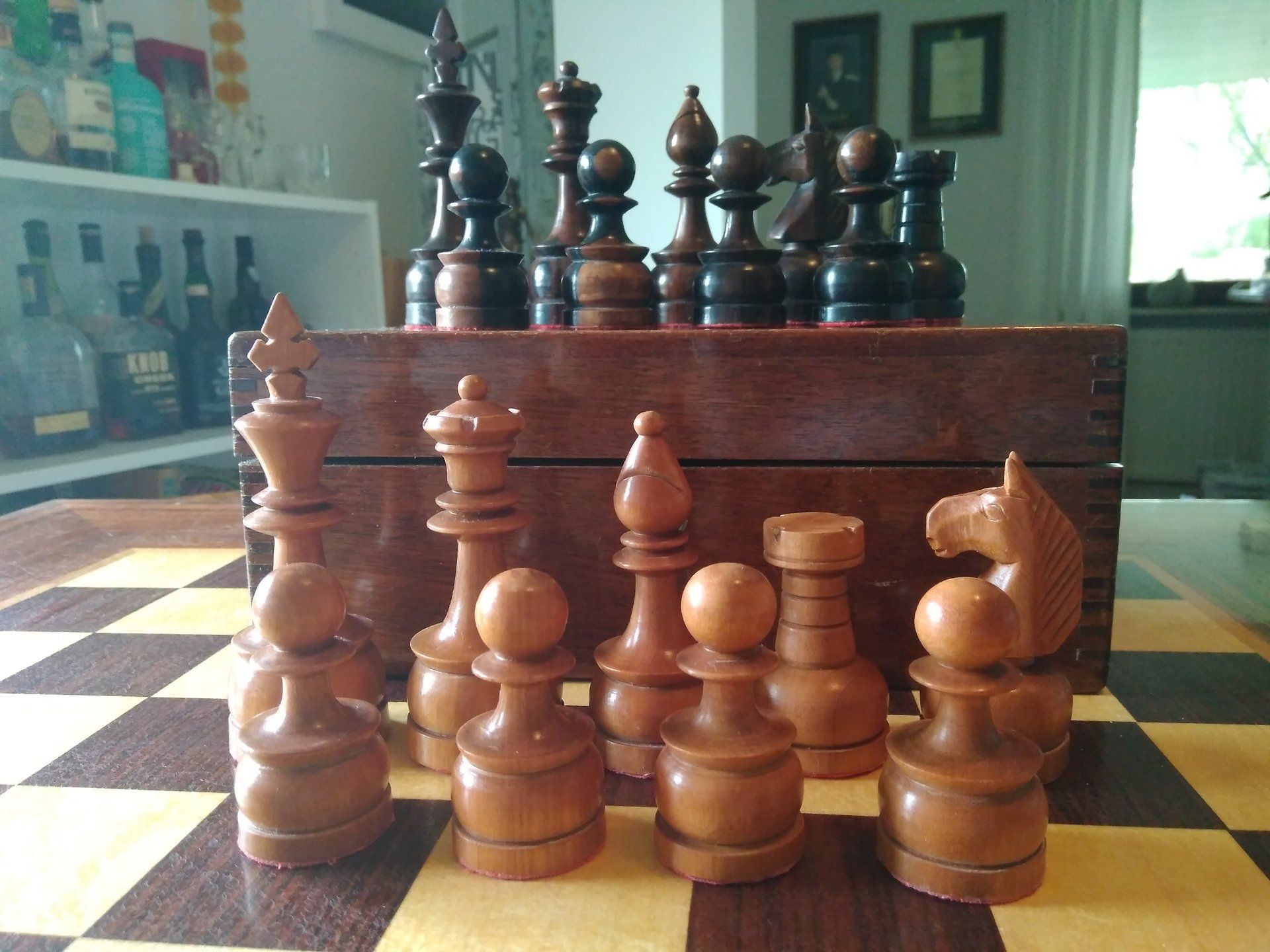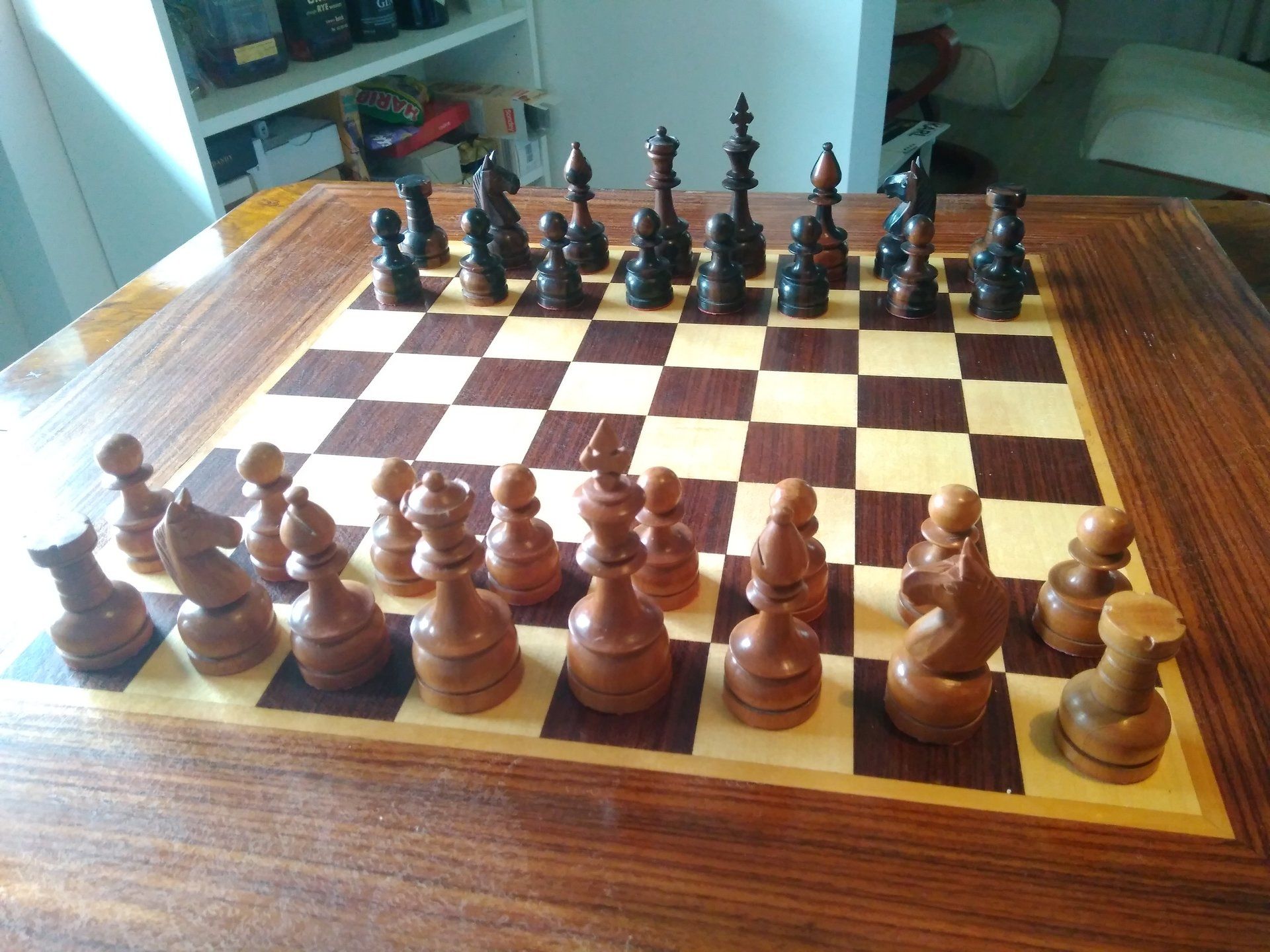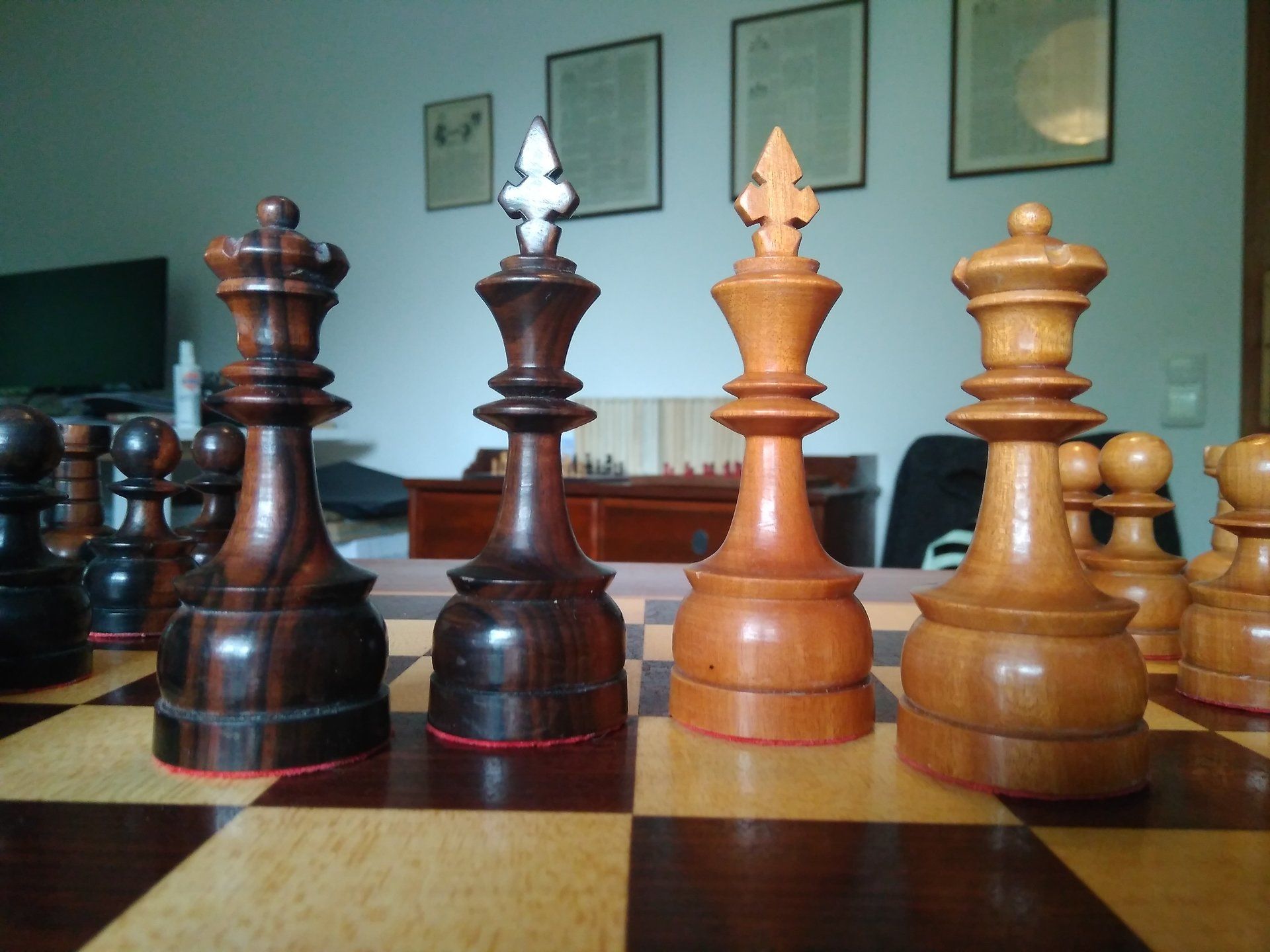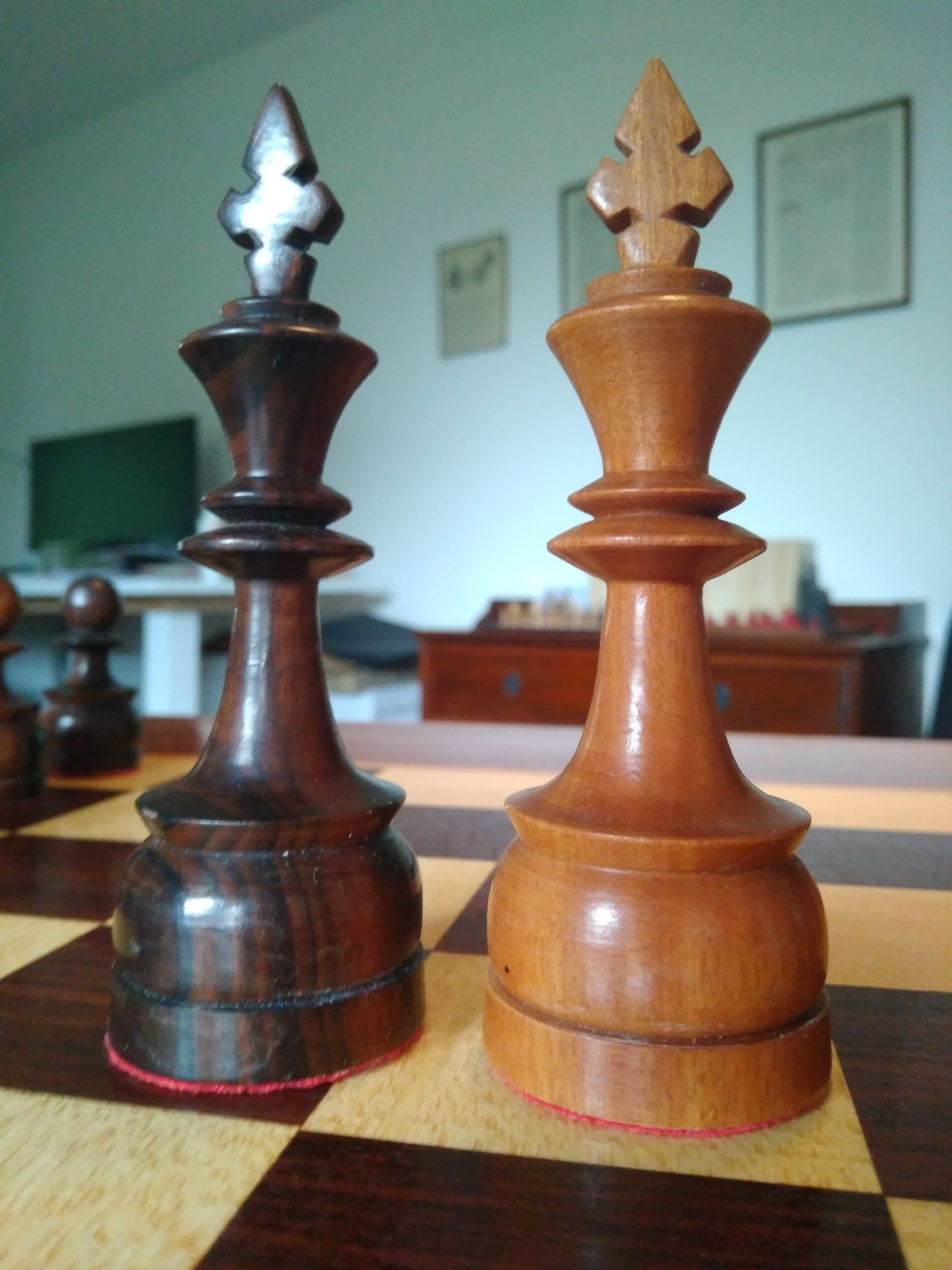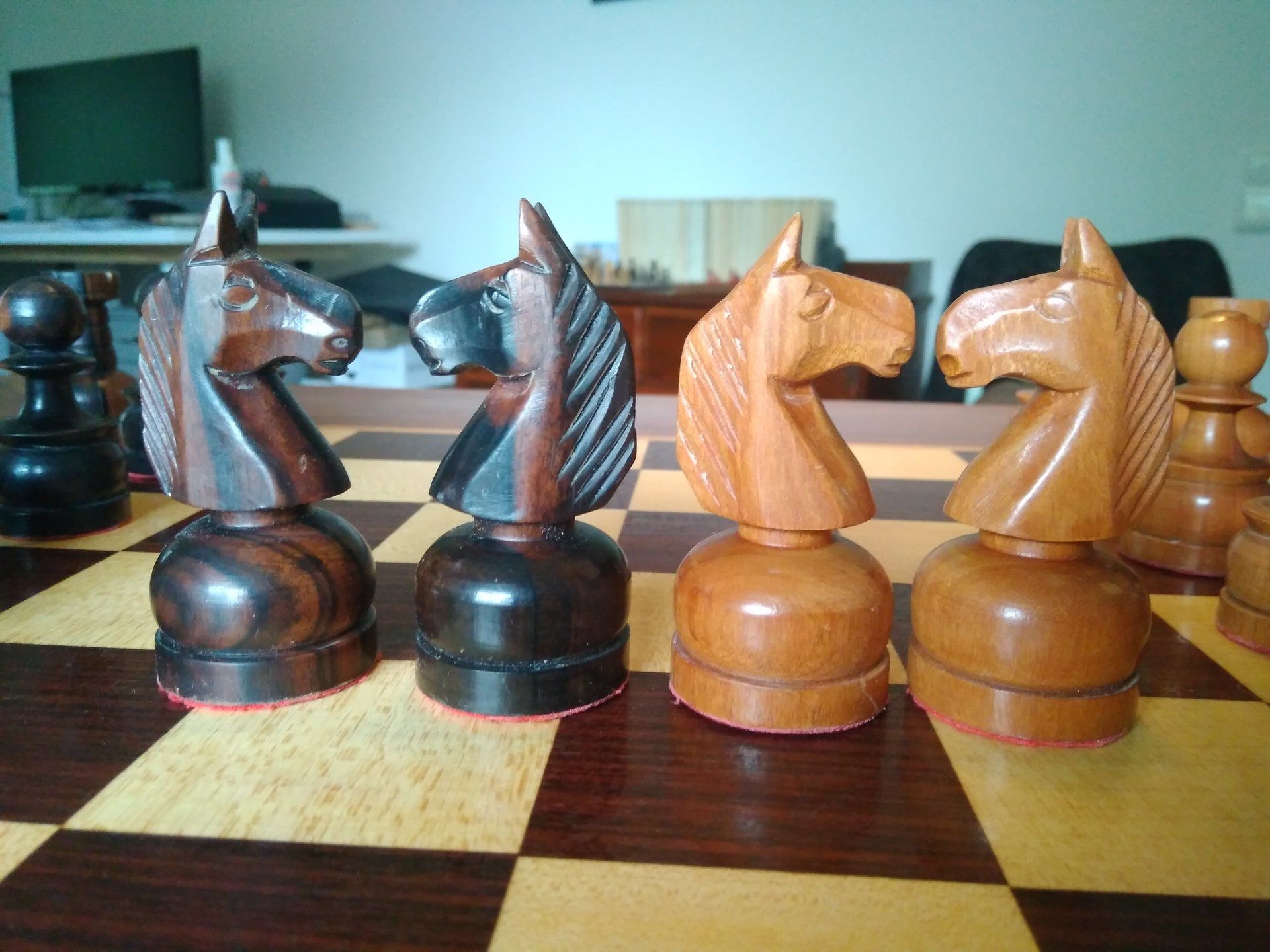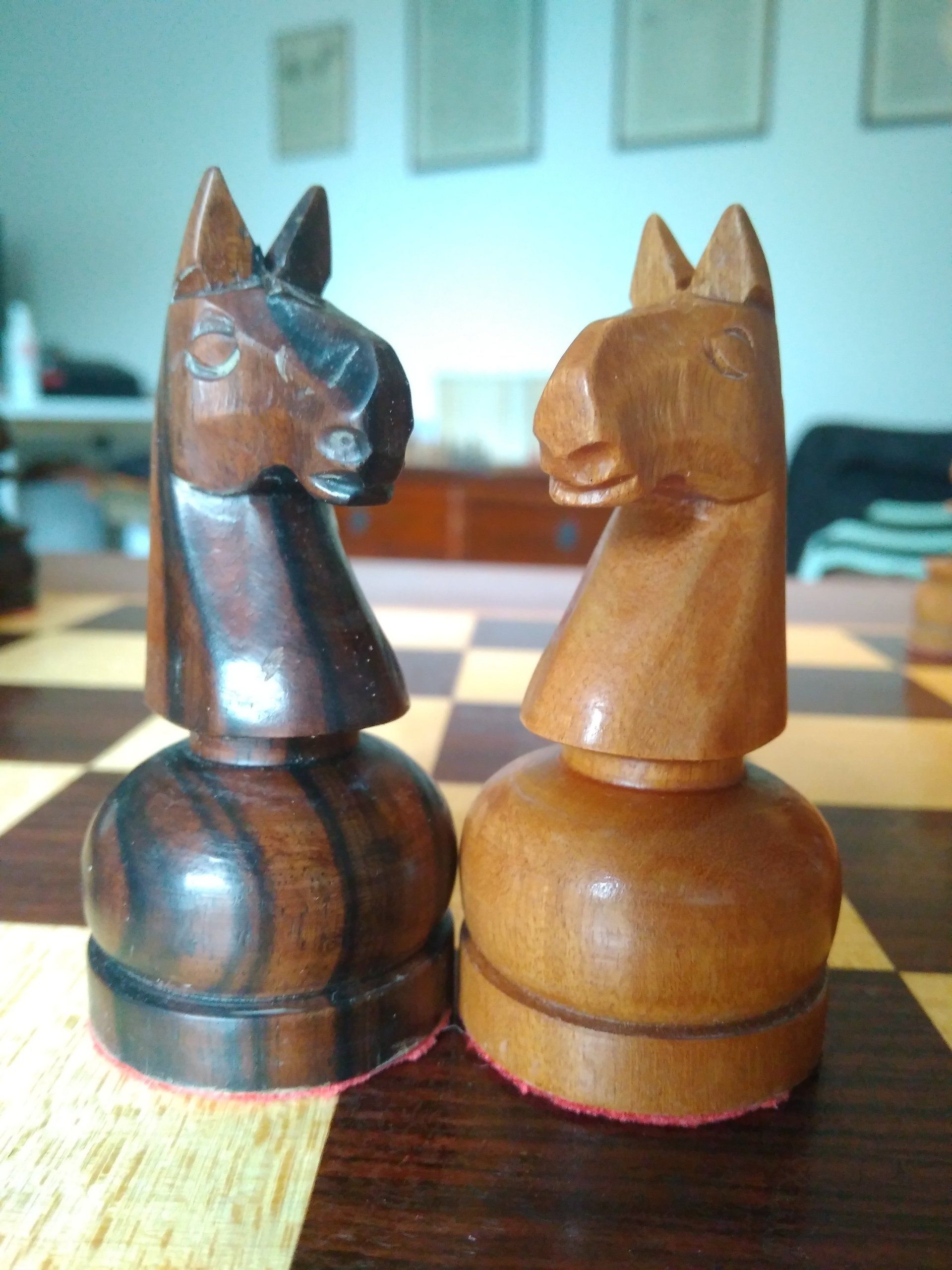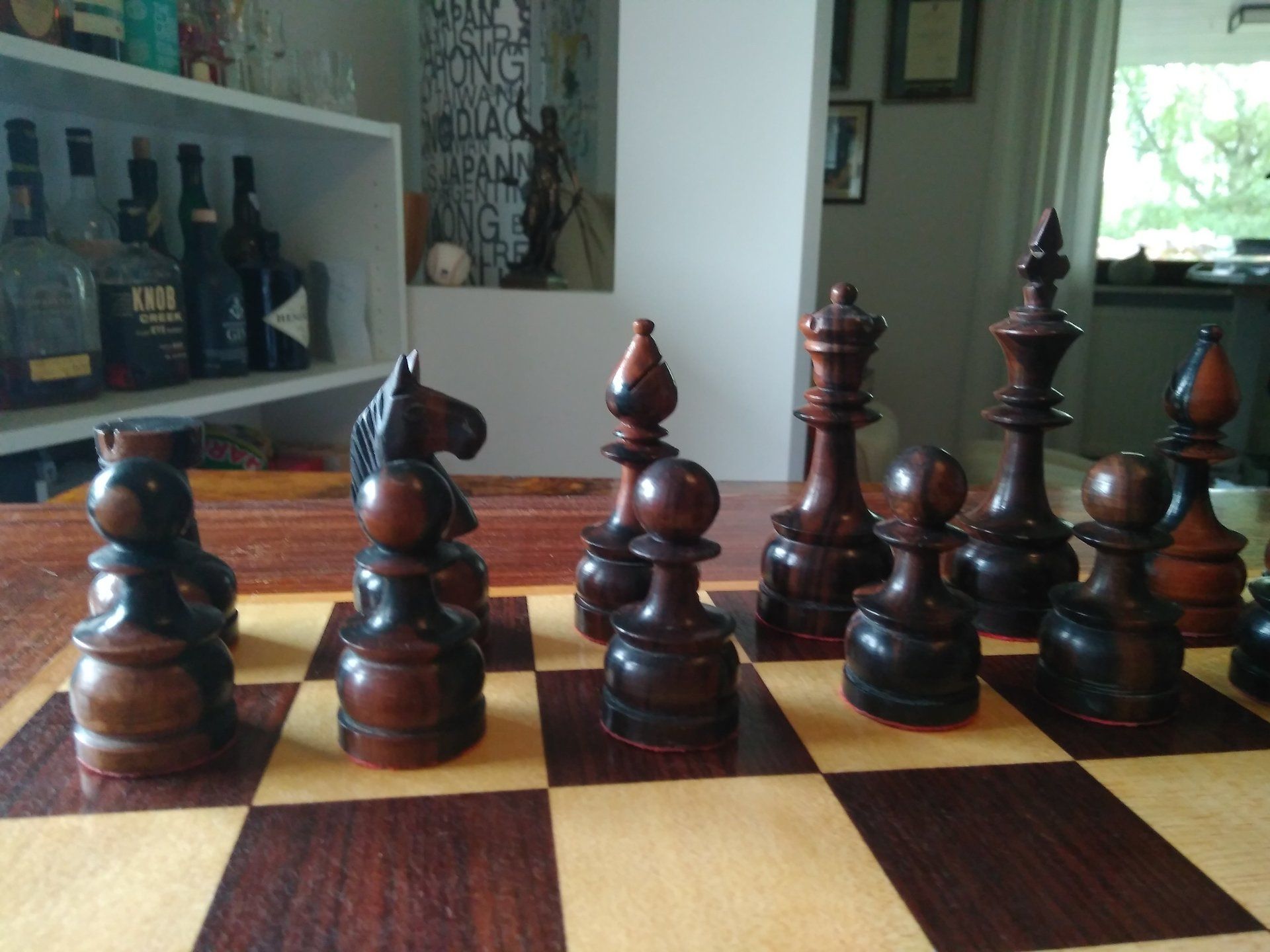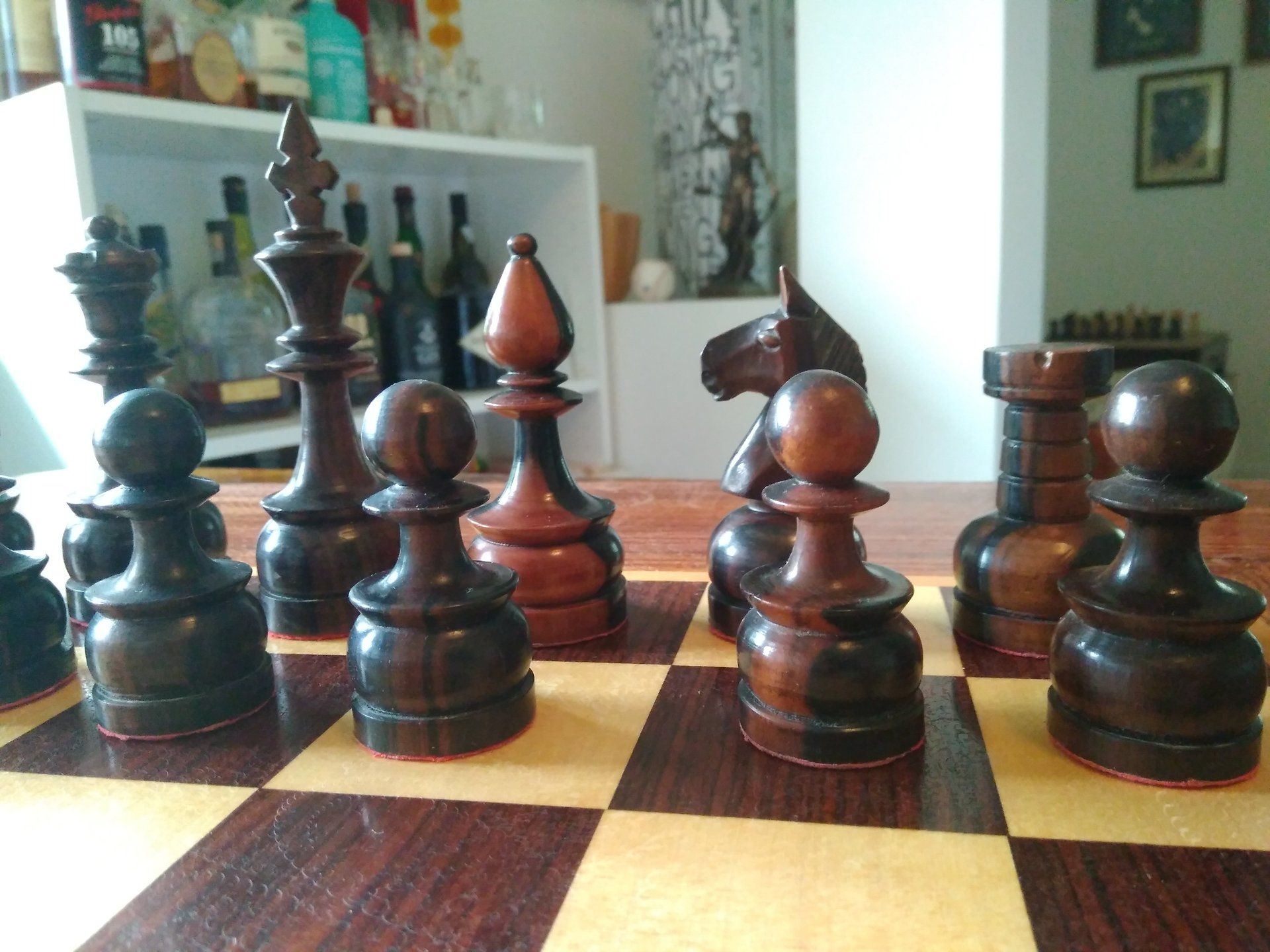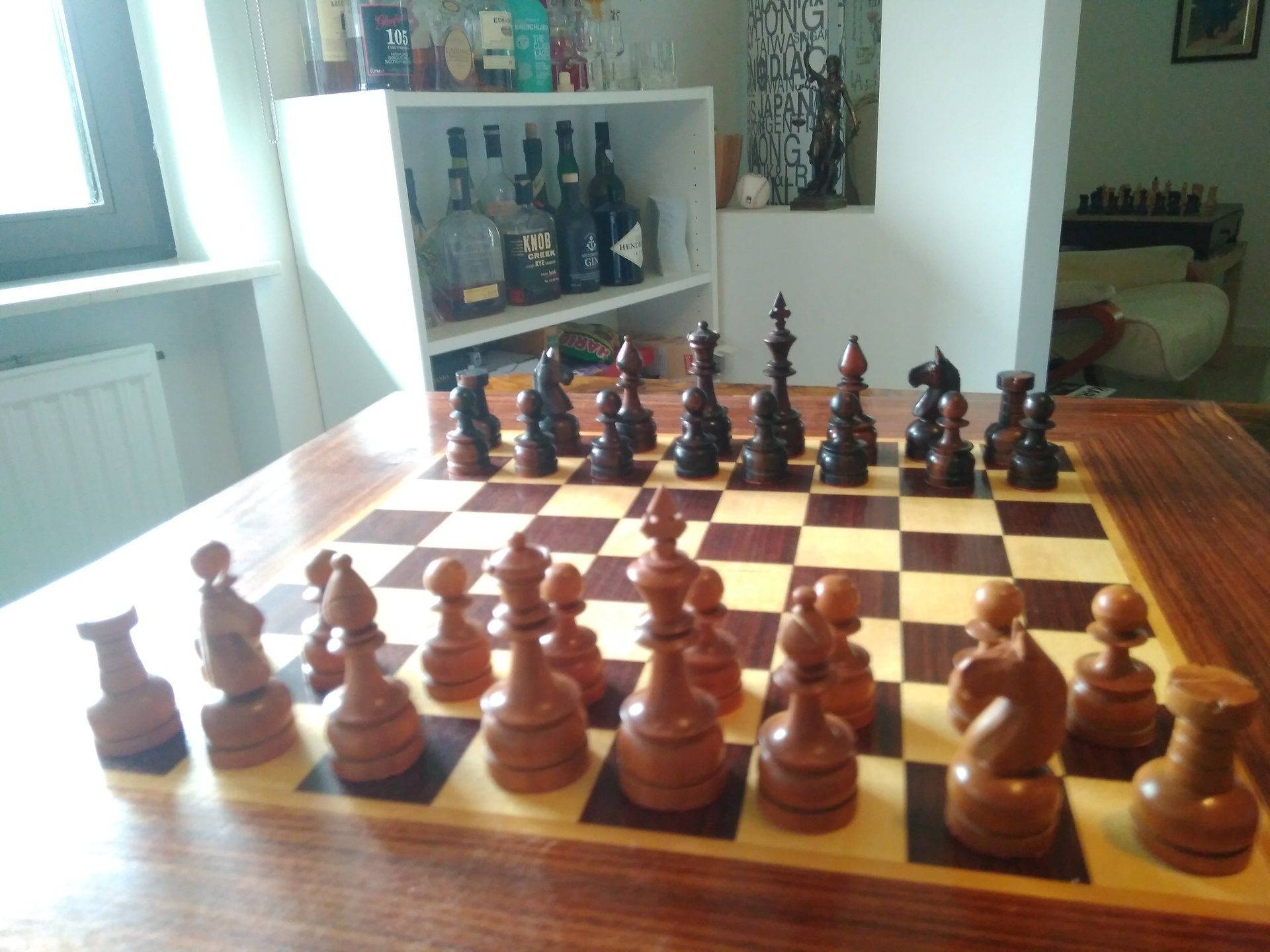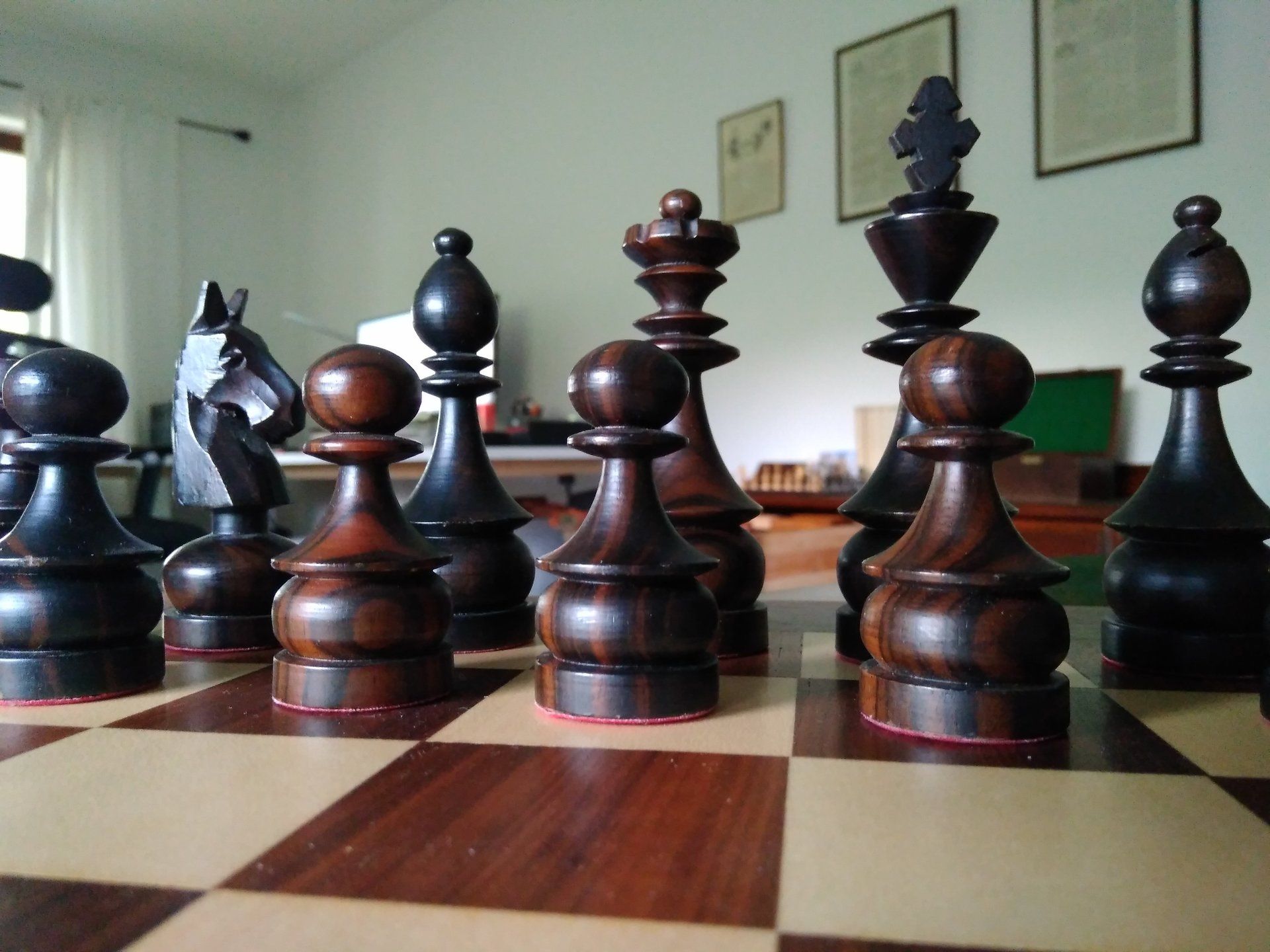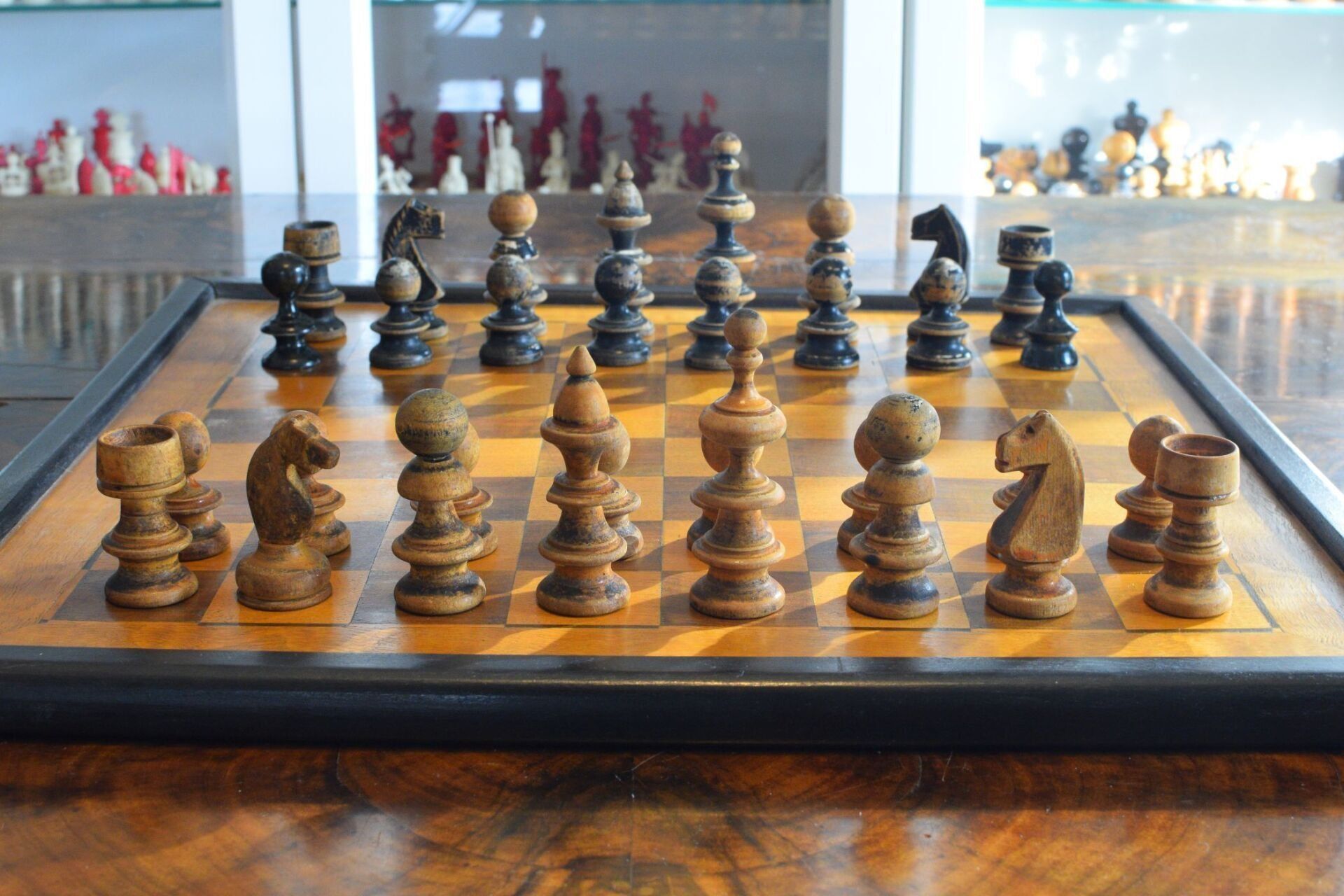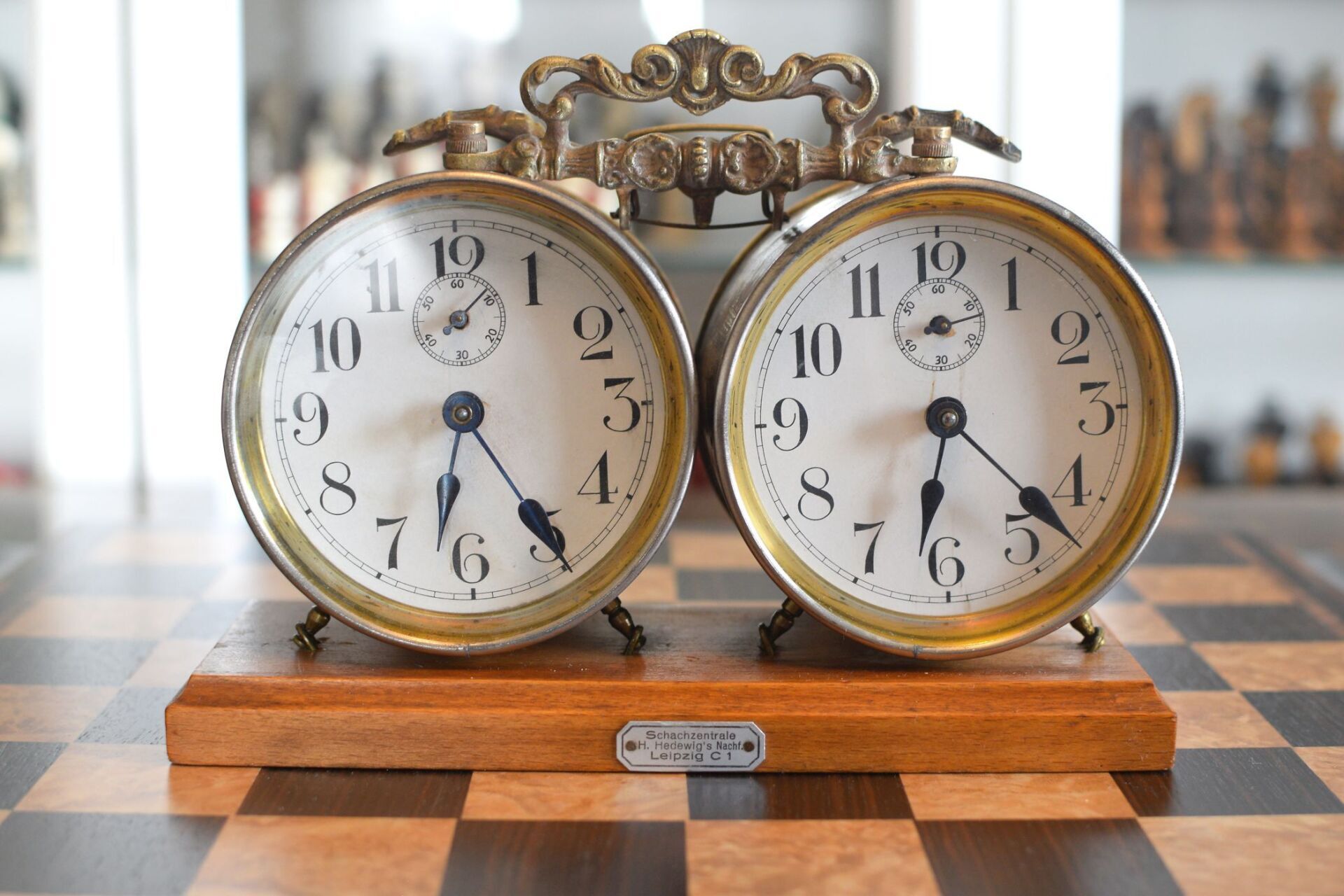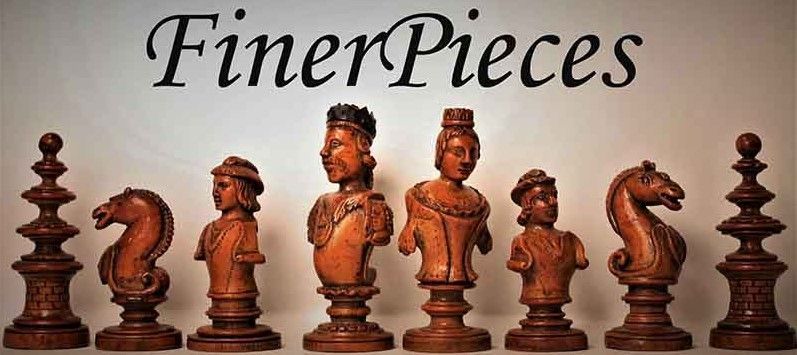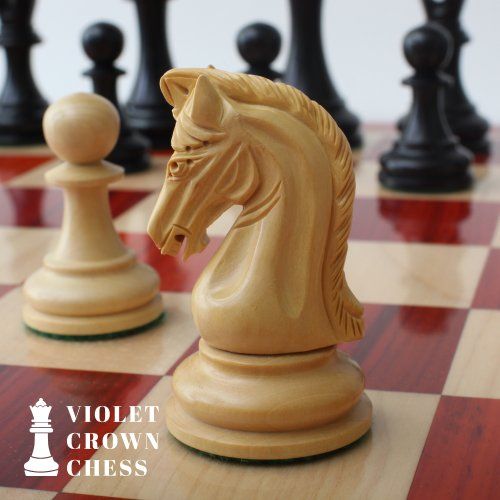Philippine Staunton Chess Set, Club Size (4.5"), ca. 1940-1950
One of my Philippine Staunton Club Size sets with a particularly lively wood grain. The King size is 4.5". The set shows all characteristics typical for the Philippine Staunton pattern:
Large oversize crosses on the Kings;
Knights made of a single piece of wood;
Pieces not weighted, but with large bases which together with the rather dense and heavy wood provide for a low center and a very stable stand;
All pieces felted in red.
Unlike my other Philippine Staunton sets, this one is most likely a pre-WWII version. According to the seller, the set was made in the 1940's. There are two characteristics, which support this assumption. The Rooks have straight bases compared to the post-WWII design, which usually had curved bases. The Knights are more elaborately carved than later versions, which can be seen when comparing this set to my later sets, e.g.
Philippine Staunton pattern, Club Set (4.5"), 1950-1970
or
Philippine Staunton pattern, Club Set (4.25"), 1950-1970.
The dark pieces are made of Kamagong wood. Kamagong is a fruit tree ( also known as velvet apple or mabolo) indigenous to the Philippines. It belongs to the ebony tree family and is likewise famous for its dark colour, which is frequently interspersed with lighter grains. Kamagong timber is extremely dense and hard and, thus, sometimes referred to as "iron wood", as it is nearly unbreakable.
The white pieces, which have gained a rich patina over the years, are made from Narra timber, a local mellow wood, which is also known as red sandalwood. White pieces are slightly bigger to compensate for the higher density and weight of the Kamagong pieces.
Both, Narra and Kamagong are endangered tree species and protected by Philippine law since 1984. The export of their timber from the Philippines without special permission from the government is illegal, which is why Kamagong sets nowadays are rare.
